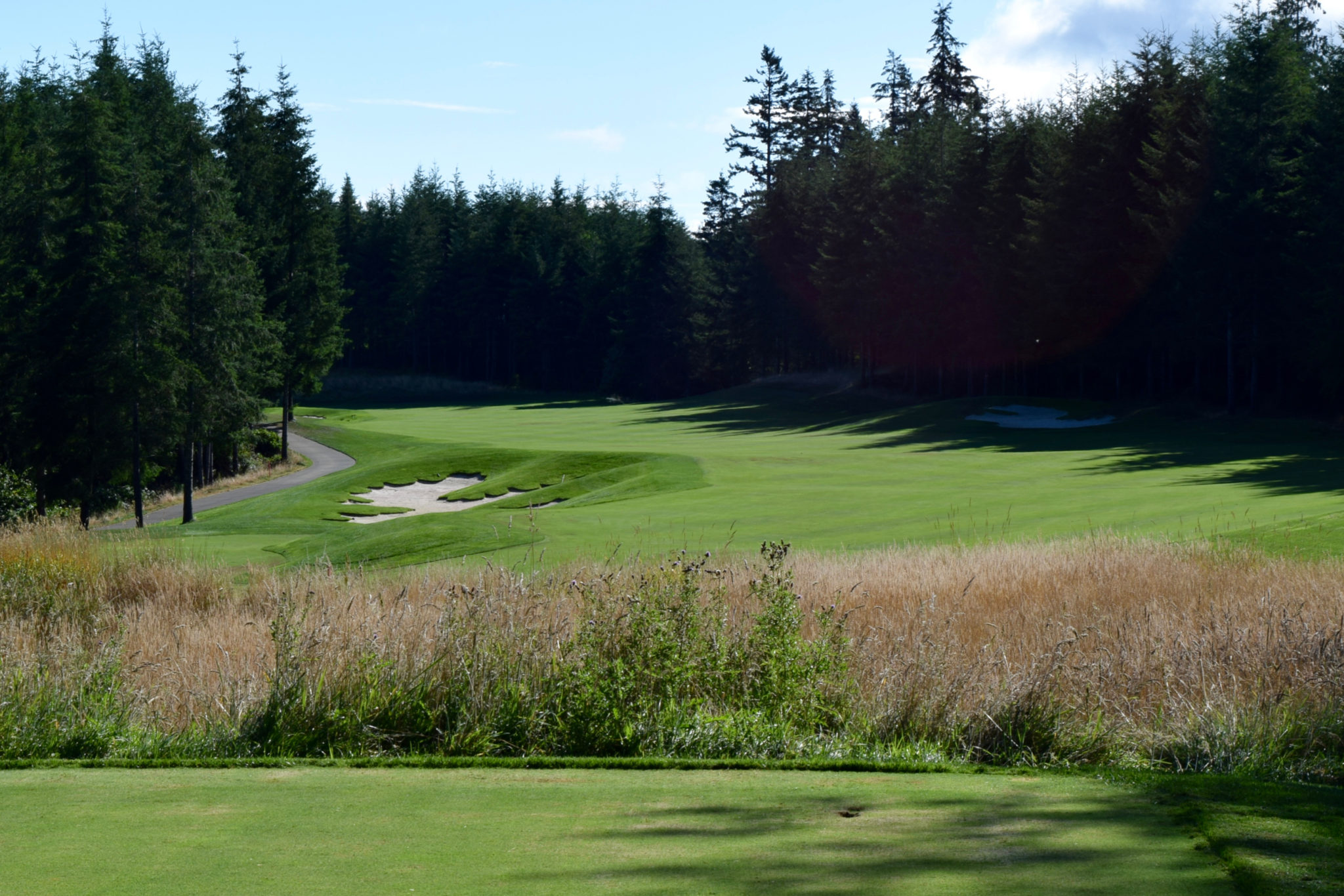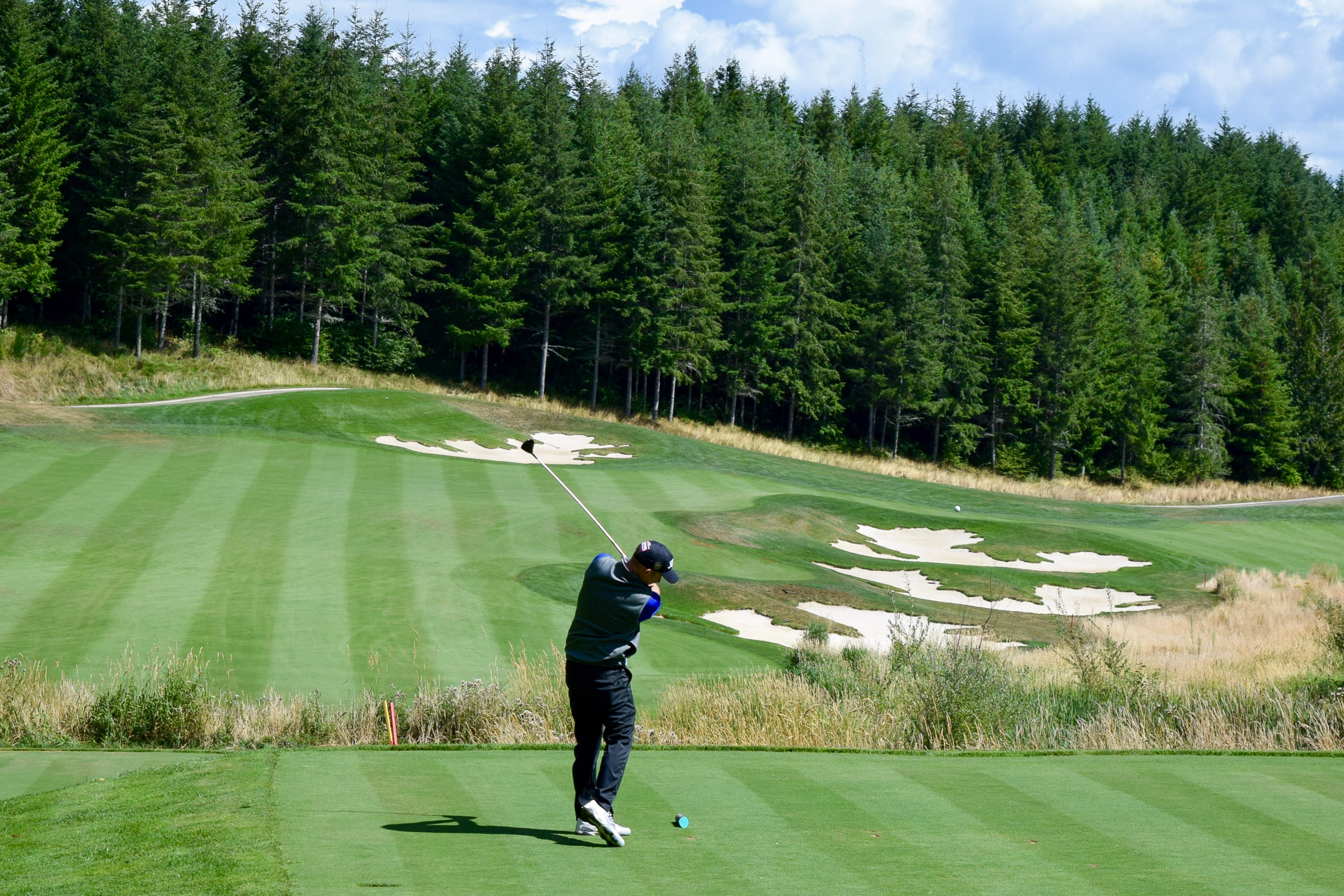Salish Cliffs: A tribe bets on a first-class golf course
Squaxin Island Tribe, owners of Little Creek Casino Resort, invest with ‘seven generations’ in mind.
SHELTON, Wash. — On the 14th hole at Salish Cliffs Golf Club, a 383-yard par-4 from the white tees, the golfer faces an intriguing second-shot decision from 170 yards or so.
To reach the flag the shot must carry, to the fringe of the green, a wide swath of wetlands. Go for the green, or lay up? Birdie putt, play-it-safe bogey, or golf ball lost to the brush-choked hazard? Risk, and reward.
They could have laid up, settling for a municipal-style course that would have served its basic purpose as “an amenity” for the casino, pumping golfers through the resort off State Route 108 via Highway 101 northwest of Olympia.
Instead, the tribe took its best shot to create a golf course that is special, a worthy destination for Pacific Northwest golfers regardless of whether they ever put a dime in a slot machine. It’s a golf course created not so much for short-term dividends but to provide an enduring legacy.
“I know that with a lot of our councilmen and members now, they wanted to build something beautiful, and something that was going to last,” said Mark West, chief executive officer of Little Creek and a citizen of the tribe who grew up near the Kamilche Valley resort site. “It was built as an amenity for the casino, but our council members really take a lot of pride in the golf course as achievement for the tribe …
“A saying among the tribes, it’s not unique to us, is ‘seven generations.’ When they make decisions, they try to think out seven generations.”
“The campaign slogan we’re working on this year is ‘not just a casino.’”
In some other Pacific Northwest casino-golf pairings, such as White Horse Golf Club in Kingston, Wash., owned by the Suquamish Tribe, which operates nearby Suquamish Clearwater Casino Resort, and Ocean Dunes Golf Club in Florence, owned by the Confederated Tribes of Coos, Lower Umpqua and Siuslaw Indians, which operates adjacent Three Rivers Casino, tribes have opened casinos and then diversified by purchasing existing golf courses.
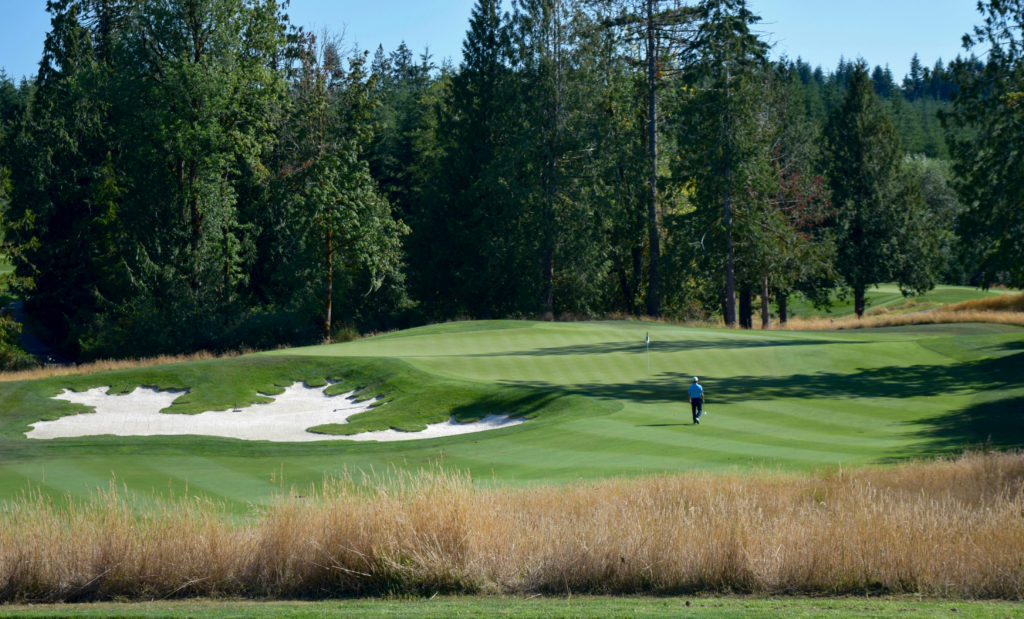
At Little Creek, however, the Squaxin Island Tribe, with the casino already established, retained golf architect Gene Bates to build a new course. He was given the freedom to make it something that could stand with the area’s best courses, and the mandate to create “a golfing experience,” as West put it.
West said that before work on the golf course began, the tribe invested roughly $7 million to build a bridge across Skookum Creek to link the casino and hotel to the golf course site, as well as a water reclamation system and a massive pond to capture winter runoff.
The golf course itself, West said, represents an investment of roughly $11 million.
Head golf professional David Kass, who flew from Florida to interview for his position in November 2010, less than a year before Salish Cliffs opened in the fall of 2011, vividly recalls his first visit to the unfinished course.
“I’m in a suit, it’s muddy, it’s a rainy November day, we’re sloshing around and my shoes are toast,” Kass said. “And as we went around the golf course, and I looked at this place, I started thinking ‘Oh my gosh, this is something special here.’
“I saw those par 4s on the back side. You’ve got a downhill one, a narrow one at the top of the hill, an up-and-down one at No. 15, a dogleg at No. 16, and I thought ‘this could be really something if they want.’”
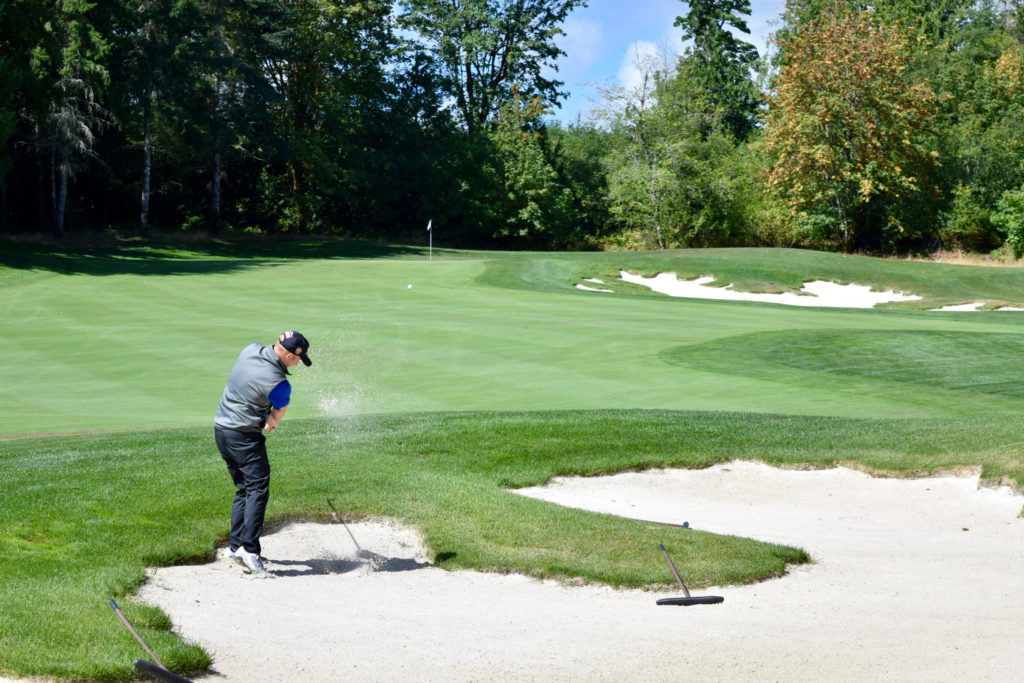
Salish Cliffs opened to instant acclaim, earning “best new course” designation from Golf Digest and Golfweek. It also earned annual top 10 in Washington rankings and top-100 resort course rankings nationally.
The course is roughly a 45-minute drive from Chambers Bay Golf Club, site of last year’s U.S. Open; the courses are a study in contrasts. Chambers Bay is a links-style, walking-only, fescue grass course on South Puget Sound with a single tree that isn’t in play. Salish Cliffs, with its 600 feet of elevation change and significant distances between some of the greens and tee boxes, requires golfers to ride in a cart, features A1 bent grass from tee to green, rye grass on the borders, and thick grass and trees beyond that.
Chambers Bay is molded in the image of courses in Scotland and Ireland, a course of bump-and-run shots, crazy bounces and wild rescue shots off hillsides; Salish Cliffs is manicured, the greens smooth, the fairways lush — and the rough impenetrable. Such is the resort’s confidence in Salish Cliffs that it is negotiating some package deals with Chambers Bay for next season.
“We feel we’re good together,” Kass said. “Golfers are going to enjoy their course one day and our course the next. They’re so different.”
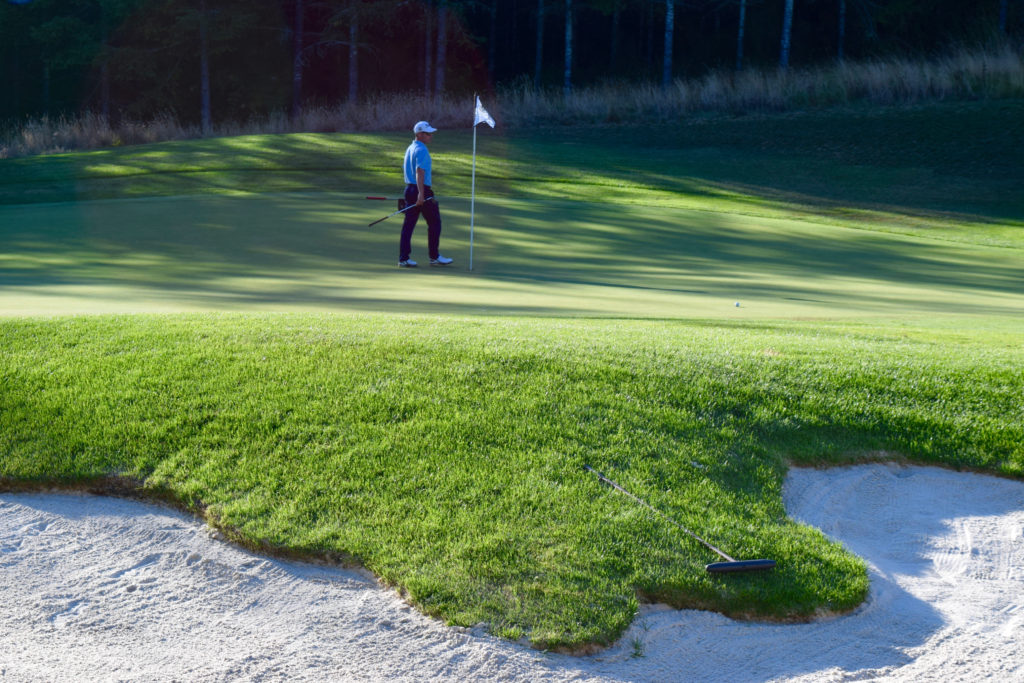
In fact, golfers who would make the roughly four-hour, 230-mile trip from the Eugene-Springfield area to play Salish Cliffs would find, in addition to Chambers Bay in University Place, other highly regarded courses in the vicinity. These include McCormick Woods and Trophy Lakes in Port Orchard, Gold Mountain in Bremerton, and White Horse.
Salish Cliffs features demand-based pricing; at this time of year, green fees are generally in the $85 to $90 range or slightly more on weekdays (although advance booking and late-day tee times can run as little as $60), that price includes the cart (featuring hole-by-hole descriptions and GPS distances) and warm-up range balls.
And here’s what you get: A scenic high-class golf course, no houses, fairways designed in such a way that you don’t see other golfers, and a compelling variety of par 4s, especially on the back nine. From the white tees, the “Players” tees, the course measures 6,312 yards, with a par of 72, a rating of 70.5 and a slope of 128. Because the fairways are softer, without a lot of roll, double-digit handicappers might consider the Masters tees, where the 5,848 yards play longer than measured, with a rating of 68.3 and a slope of 123.
“We always get asked, ‘what’s your signature hole?’” Kass said, answering that the course’s singular strength is its variety. “It’s 18 different holes,” he said.
Play at Salish Cliffs averages around 20,000 rounds a year; West said 2015 topped out at a record 25,000, when the summer was long and the Open brought golf fans to the region. About 20,000 rounds annually is a number with which the course is comfortable, Kass and West agreed; more rounds would impinge on the experience.
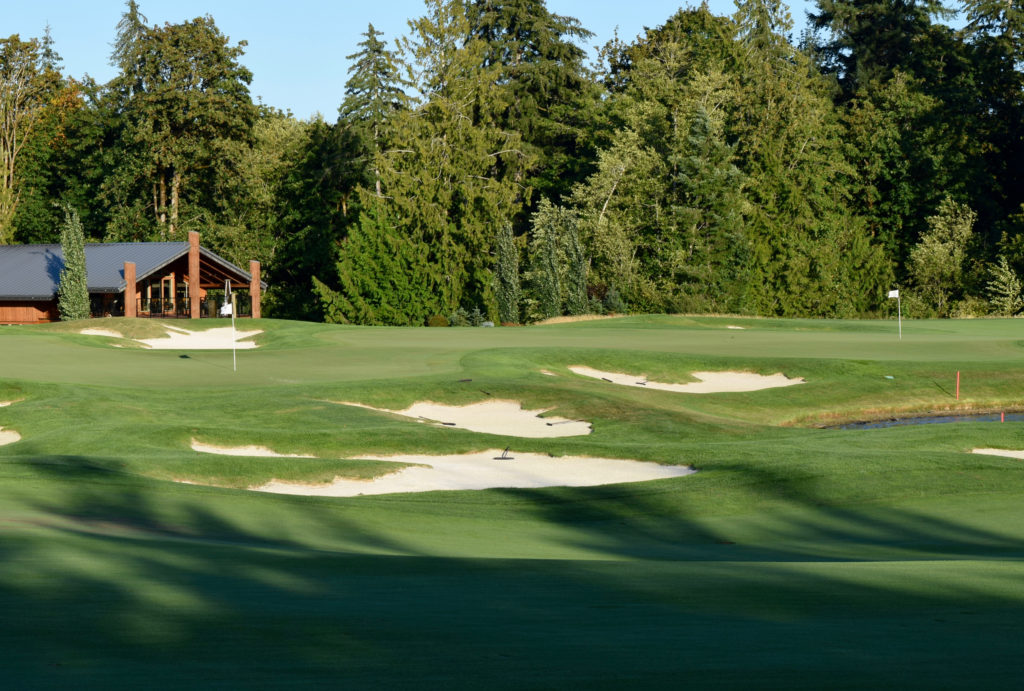
“It serves the purpose they intended it to, which was to lift the resort’s reputation and its level of amenities,” West said. “A lot of people would say ‘We’ve got to have a return on investment in three years or five years.’ We don’t look at it quite that way. It wasn’t taken to the shareholders that ‘it’s going to bring in a ton of money.’ We knew it wouldn’t. We knew it would take five or six years just to mature. If I can get it to break even, I feel like I’m being successful.”
Is it? “Nearly, nearly,” West said.
At Salish Cliffs, for now, the bottom line is the quality of the golf course, with the final accounting as far as seven generations away.
(Originally published Eugene Register-Guard, on Aug. 23, 2016.)
